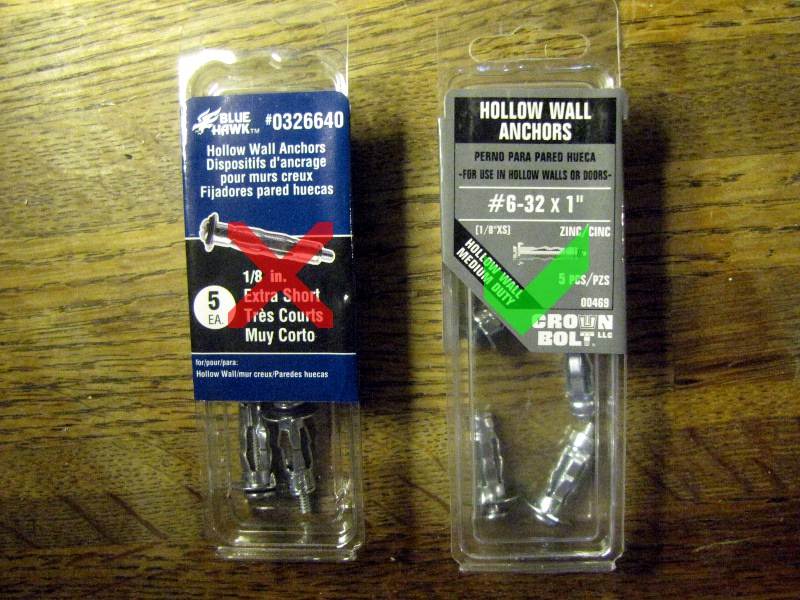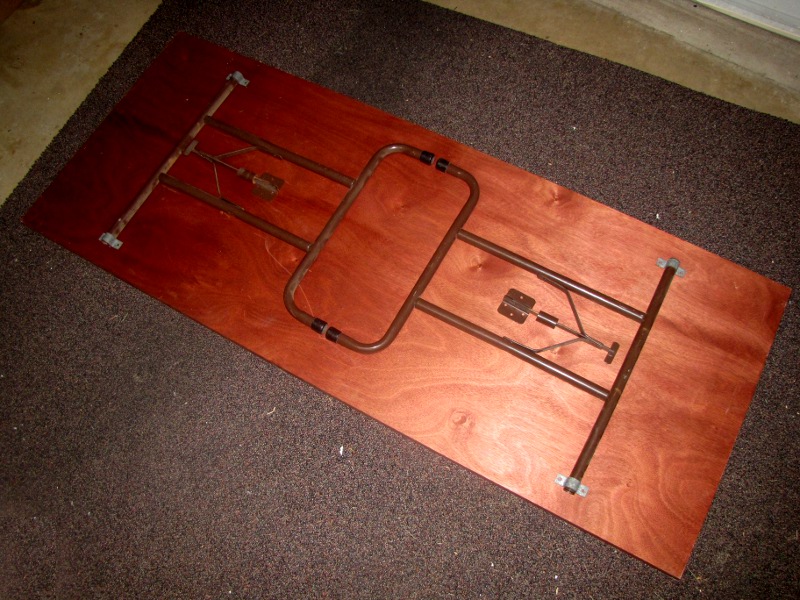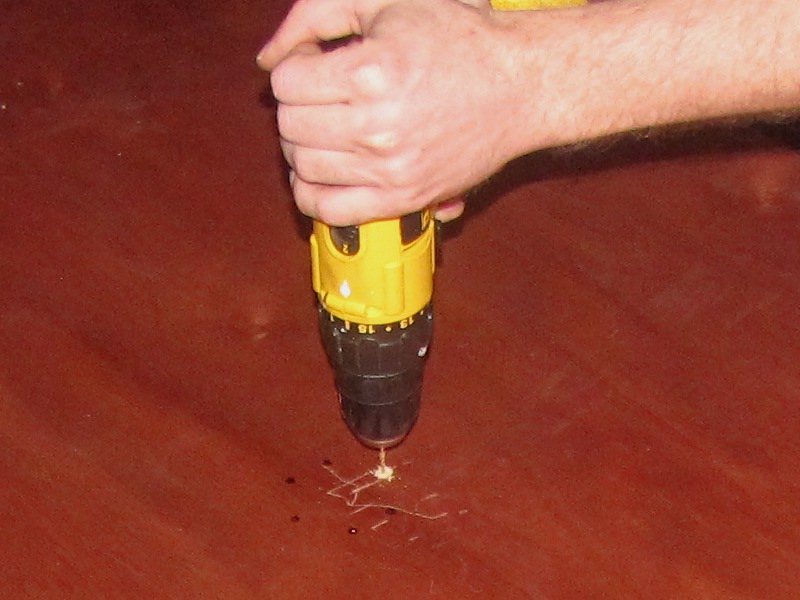Used hollow-core doors are not hard to come by. The tricky part is finding one that doesn’t have a knob hole and/or hinge mortises. But even these can be found. Habitat for Humanity ReStores have a wide selection of donated construction materials, including hollow-core doors, available for a song. Likewise, big chain hardware stores often have “seconds” that they will be glad to get rid of.
If all else fails, doorknob holes and/or hinge mortises can be patched, covered, or simply ignored. If you’re going to be using the table as a desk, a doorknob hole actually makes a handy place to mount a desk lamp and/or pass cords through.
The door I bought was a second from Lowe’s, and it came already stained. If your door is unfinished and/or you want to refinish it, I suggest finishing the bottom surface between steps 7 and 8 in this guide, then finishing the top and sides once the legs have been mounted so you can stand the table on its own legs and work at a more comfortable height.
I advise against using 1/8″ XRS Molly bolts purchased from Lowe’s, as shown to the left in the photo. I started with these, and found them to be of terrible quality–the teeth on the bolt sleeve would fold over instead of driving in, the screw threads would strip out at the slightest provocation, and one time the body of the sleeve even separated from the head inside the door. Those by Crown Bolt, pictured, were purchased from the Home Depot and worked great.























